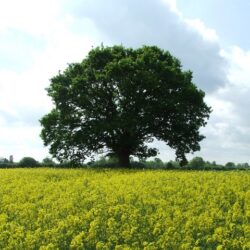
Yehoshua Heshil ben Rabbi Binyamin Miro (fl. first-half 19th c.) was a writer and Jewish educator in Prussia, an early advocate and teacher of Jewish girls. He worked as a professor at a private school, and a teacher at the Königliche Wilhelms-Schule (and possibly also the Industrial School for Israelite Girls), in then Prussian Breslau. We know very little else about Miro aside from his publication of a popular anthology of teḥinot for German speaking women first published in 1829. If you know more about Miro, please contact us.
Filter resources by Category
Addenda | Additional Fast Days | Additional Morning Prayers | Aleinu | Bedtime Shema | Before the Aliyot | Tehilim Book 2 (Psalms 42–72) | Brit Milah & Simḥat Bat | Tashlikh | Child care | Rosh Ḥodesh Elul (אֶלוּל) | Entering Sacred Spaces | Erev Shabbat | Friday | Memorial, Funeral, and Cemetery Prayer Guides | 🇩🇪 Germany | Pesaḥ Yamei Ḥag | Ḥanukkah | Hoshana Rabba | Interment | 🌐 International Women's Day (March 8th) | Learning, Study, and School | Marriage | Monday | 🇺🇸 Mother's Day (2nd Sunday of May) | Mourning | Old Age | Personal & Paraliturgical collections of prayers | 7th Day of Pesaḥ | Conception, Pregnancy, and Childbirth | Repenting, Resetting, and Reconciliation | Rosh haShanah (l’Maaseh Bereshit) | Rosh haShanah la-Behemah | Rosh Ḥodesh | Saturday | Sefirat ha-Omer | Social Justice, Peace, and Liberty | Shavuot | Shemini Atseret | Shiv'ah Asar b'Tamuz | Simḥat Torah | Sukkot | Sunday | Ta'anit Esther | Thursday | Tishah b'Av | Tsom Gedalyah | Tuesday | Wednesday | Well-being, health, and caregiving | Labor, Fulfillment, and Parnasah | 🇮🇱 Yom ha-Ém (30 Shəvat) | Yom Kippur | Yom Kippur Qatan | Yom Kippur Readings
Filter resources by Tag
Filter resources by Collaborator Name
Filter resources by Language
Filter resources by Date Range
Contributed by:
Andreas Rusterholz (transcription), Yehoshua Heshil Miro, Isaak Pleßner, Aharon N. Varady (translation)
“Für Sabath” was included by Yehoshua Heshil Miro in his anthology of teḥinot, בית יעקב (Beit Yaaqov) Allgemeines Gebetbuch für gebildete Frauen mosaischer Religion. It first appears in the 1829 edition, תחנות Teḥinot ein Gebetbuch für gebildete Frauenzimmer mosaischer Religion as teḥinah №11 on pp. 14-16. In the 1835 and 1842 editions, it also appears as teḥinah №11 on pp. 16-18. In a note to “Gebet am Tage der Gedächtnißfeier verstorbener Eltern, an deren Grabe zu sprechen” published in the 1835 edition, Miro records that Isaak Plessner sent this prayer to him, and from this we infer that its authorship may also be attributed to him. . . .

